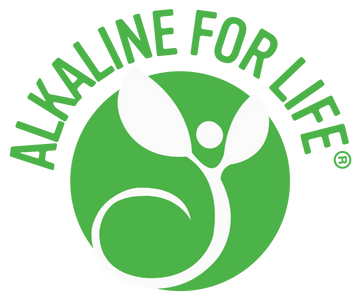What Is the Alkaline Diet?

What Is the Alkaline Diet?
The alkaline diet is an ancient, yet novel, approach to nourishment. Life-supporting in the most profound sense, the Alkaline for Life® diet is composed of fresh, whole foods combined in a way that promotes optimum biochemical functioning through pH balance.
This is a unique approach to eating that provides the body with what it needs to maintain a favorable pH level. This means that the Alkaline for Life® diet provides sufficient alkalizing mineral compounds to buffer the acids we produce daily through the metabolism of proteins, grains, processed foods, alcohol, sugar, and other acid-forming foods.Unlike other eating programs and diets, the Alkaline for Life® diet is truly life-supporting. It works the way nature works!
Specifically, the Alkaline for Life® diet represents an approach to nourishing the body that focuses on the following alkaline foods:
- most vegetables and root crops
- most fruits
- nuts and seeds
- lentils and pulses
- spices and herbs
The Alkaline for Life® diet is moderate in:
- flesh foods and concentrated proteins
- grains
- dairy products
The Alkaline for Life® diet more strictly limits:
- refined and processed foods
- sugar
- alcohol
- commercial table salt
What is the goal of the Alkaline for Life® diet?
The goal is internal pH balance. The idea is to consume enough alkaline-forming foods to create a slightly alkaline state in our bodies—just as our ancestors did. That doesn't mean you will never consume acid-forming foods. But it does mean tilting the scale in favor of alkaline-forming foods. For example, protein is very acid forming, but it is only protein taken in excess of our basic requirements that adds to an acid load. We all need at least 50 to 60 grams of protein per day, which is an amount our body can handle without creating troublesome excess free acid. Another example concerns grains, processed foods, sugars, and alcohol. While some folks may choose to strictly limit these, it is not necessary. The key is moderation and balance. If you have enough alkalizing reserves in your body, you can consume varying amounts of these foods and still maintain a life-supporting, slightly alkaline pH.
What do I mean when I say a food is acid forming?
When we metabolize foods in our body, they are broken down and transformed, and some leave an acid residue. This means that their metabolism resulted in the production of free hydrogen ions (H+).
This free H+, or acid, must be buffered or neutralized by alkalizing compounds in order to maintain the obligatory pH biochemical balance necessary for life.
Most notably, the metabolism of excess protein leaves an acid residue within the body. This can be seen as our own internal “acid rain” similar to the environmental acid rain created by the CO2 and sulfuric acid byproducts of the burning of fossil fuels.
In addition to protein, many other common foods are also acid forming, such as grains, cheeses, beans and peas, alcohol, and many sugars. These also contribute free hydrogen or acid when metabolized.
What do I mean when I say a food is alkaline forming?
Alkaline-forming foods are those which, when utilized by the body, end up contributing bicarbonate. Ultimately metabolic pH depends on the balance of bicarbonate and free hydrogen in the body. Foods that end up contributing bicarbonate are generally plant foods high in potassium, often in the form of potassium citrate. Potassium citrate when processed within the body results in the production of bicarbonate.
The alkalizing foods include most, but not all, vegetables, fruits, nuts, seeds, lentils, pulses, herbs, and spices.
Further information:
The Acid-Alkaline Food Guide provides further details on how and why diet impacts pH balance.
The Alkaline for Life® Diet Starter Kit provides complete details and materials for testing your pH and developing pH balance. (It includes a copy of The Acid-Alkaline Food Guide.)


